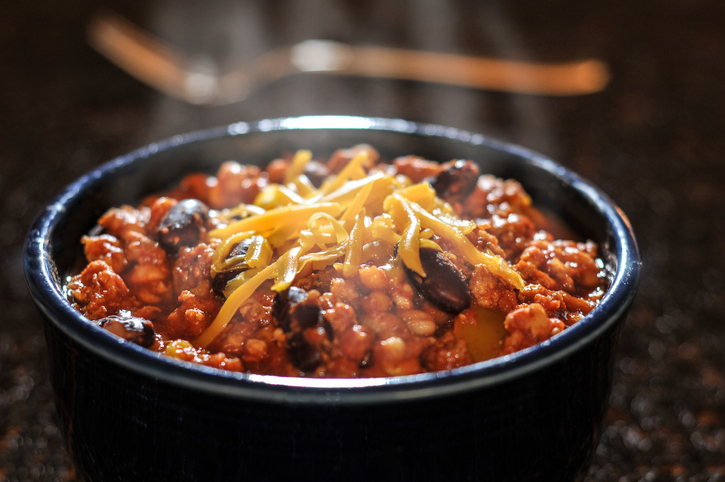What’s better? Chili with beans or chili without beans?
It’s a debate that has raged for years. This question ignites passion and can sometimes even flare tempers. For some, it’s a war! Thankfully, this war is waged with stomachs and not weapons. Ok, we may be exaggerating a bit, but the fact remains (as silly as it seems) some people have very strong stances as to whether beans belong in chili or not.
For the most part, it’s a geographical thing. In Texas, chili without beans is the norm. This sentiment is carried throughout many southern states. However, hop on the interstate and head north and you’ll find that many kitchens will be cooking up pots of chili exclusively with beans.
Is there a right side? Is there a wrong side? Obviously, we like our chili with plenty of beans, but there are two sides to every story.
Chili without beans
By almost all accounts, chili as we know it started in the great state of Texas. Prepared as a quick and easy feast for ranchers and cattle drivers to make out on the range, the base of the recipe is classic chili con carne, Spanish for chilies with meat. Many are quick to point out that if beans were meant to be in chili it would have been called chili con frijoles. It could be easily prepared with local resources like chilis, onions, garlic and fresh locally-grown beef.
Then, in the early 1900’s, the mythos of beanless chili continued to grow with the arrival of the Chili Queens in Texas. Offering food, shelter and musical entertainment to travelers, these kitchens were famous serving up a meat and chili stew without beans. Historians mark this as the firmest roots to classic Texas chili.
Seeing as chili really began in Texas, many won’t accept anything other than authentic Texas-style chili (without beans) as being “real chili.”
Chili with beans
As times grew tough for families during the Great Depression, the simple and cheap recipe for chili began to appear more and more on tables across the country, not just in Texas. However, with meat sometimes being expensive or a luxury, chefs had to seek out meat alternatives. Enter the humble bean!
Meaty, hearty and ever-so rich in protein, the bean became the perfect substitute for chili recipes when meat was not available. But, a tradition was born as homes continued to add beans to their pots of chili, either by themselves or even alongside meat. Cooks and eaters alike appreciated the textures and tastes that beans brought to the dish. As for the right bean for the job? While chili can be made with any kind of bean, kidney beans have emerged as the favorite.
The comparison can (and has) been made that chili without beans is really just a meat sauce, like a spicier Italian-style sauce you would serve over spaghetti. Chili with beans is much more substantial and can stand better by itself, some say.
The Verdict
No matter what side of this debate you fall on, one thing is certain, you probably aren’t going to change your mind anytime soon. People like their chili the way they prefer because of where they come from, how they grew up and what they were first introduced to as a kid. Those opinions are hard to change.
But we can all agree on this: with or without beans, chili is awesome! For football parties, warming up during the fall and winter or just feeding a lot of mouths at once, chili is always a great choice whether it has beans in it or not.
However, it’s also important to expand your horizons, both culturally and culinarily. It gives you perspectives into different ways of life and different ways of thinking. So, even if you are the most die-hard chili con carne connoisseur or a brave bean loyalist, see what’s on the other side of the fence every now and then.
For you bean lovers, you may find a new favorite. For you non-bean eaters, you may just find something you like after all like White Bean Chicken Chili or Black Bean Chorizo Chili.
This recipe can be made with either Randall Great Northern Beans or the Randall Organic Great Northern Beans.


